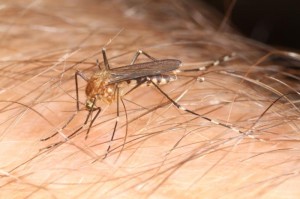Habits of mosquitoes
A knowledge of the habit is essential from the point of view of controlling of arthropods as will as for a proper understanding of the point they play in disease transmission.
Distribution:
Throughout the world (Tropical & temperate region).
Bites:
Only female mosquitoes can bite in the evening or in the early part of the night (Haematophagous).
Breeding:
Anopheles prefer clean water for breeding while culex breed in dirty water. Aedes breed in artificial collection of water.
Feeding:
Anthrophilic (Those insects which prefer to suck the blood from human beings)
Zoophilic (Those insects which prefer to suck the blood from animals)
Resting:
Endophilic (those insects which rest inside the house)
Exophilic (those insects which rest outside the house in bushes)
Dispersal:
The normal range of flight is about 2-3 kms from their breeding places.
Life span:
It depends upon the environmental conditions, average life period of female mosquitoes are 2-3 weeks and male are short lived.
Medical importance
Genus Anopheles: Malaria
Genus Culex: Filarial& viral encephalitis
Aedes: Yellow fever & dengue fever
Difference between Anopheles/Aedes Mosquitoes
Life cycle of mosquito
Metamorphosis is complete.
1. Egg: Anopheles female lays eggs singly in fresh water, size of eggs is about 1mm, boat shaped, lateral float are present. About 100-250 eggs are laid. Eggs are not visible by naked eye.
Culex female lays eggs in stagnant & polluted water in raft, they are oval in shape and lateral float are absent.
2. Larva: After 2-3 days larva emerge from egg, actively swimming on water surface and feed on algae, fungi & bacteria. Larva is about 1-6 mm long. Body is divided into three parts (head, thorax & abdomen). Spiracles (respiratory organs) are present on abdomen. Palmate hairs are present on abdomen which help larvae to float in water.
3. Pupa: after 5-7 days larva becomes pupa. Pupa is comma shaped and moves actively on water surface. The body is divided in cephalothorax and abdomen. Two small respiratory trumpets are present on thorax. It does not feed. The pupal stage lasts for 1-2 days.
4. Adults: when the adult emerges from pupa, it rest for a while on the pupal skin then flies away. Under favorable environmental conditions the life cycle is completed in 7-10 days. Normally the adult mosquito lives for about 2-3 weeks.
Control Measures
1. Biological control: Use of parasites, predator (fish & frog) and pathogens. The best known fish are Gambusia affinis and lobister reteculatus.
2. Genetic control: Release of sterile male mosquitoes in the field. Which will compete with the natural fertile male mosquito in mating & the population will be automatically reduced.
3. Environmental control: To eliminate their breeding places. This is also known is source reduction. Filling, leveling and drainage of breeding places.
4. Chemical control:
- Anti larval chemicals like Paris green, mineral oil.
- Anti adult chemicals like Melathian, Fenthian and abate.
5. Protection against mosquito bite
- Screening of doors, windows and ventilation’s of house/hospital.
- Mosquito net should be tucked around the bed.
- Insects repellants like deet , dimethyle, phthlate and dimethyle carbate are available in local market in shape of oil, creams & lotions. They should be used on the exposed parts of the body.
 howMed Know Yourself
howMed Know Yourself





